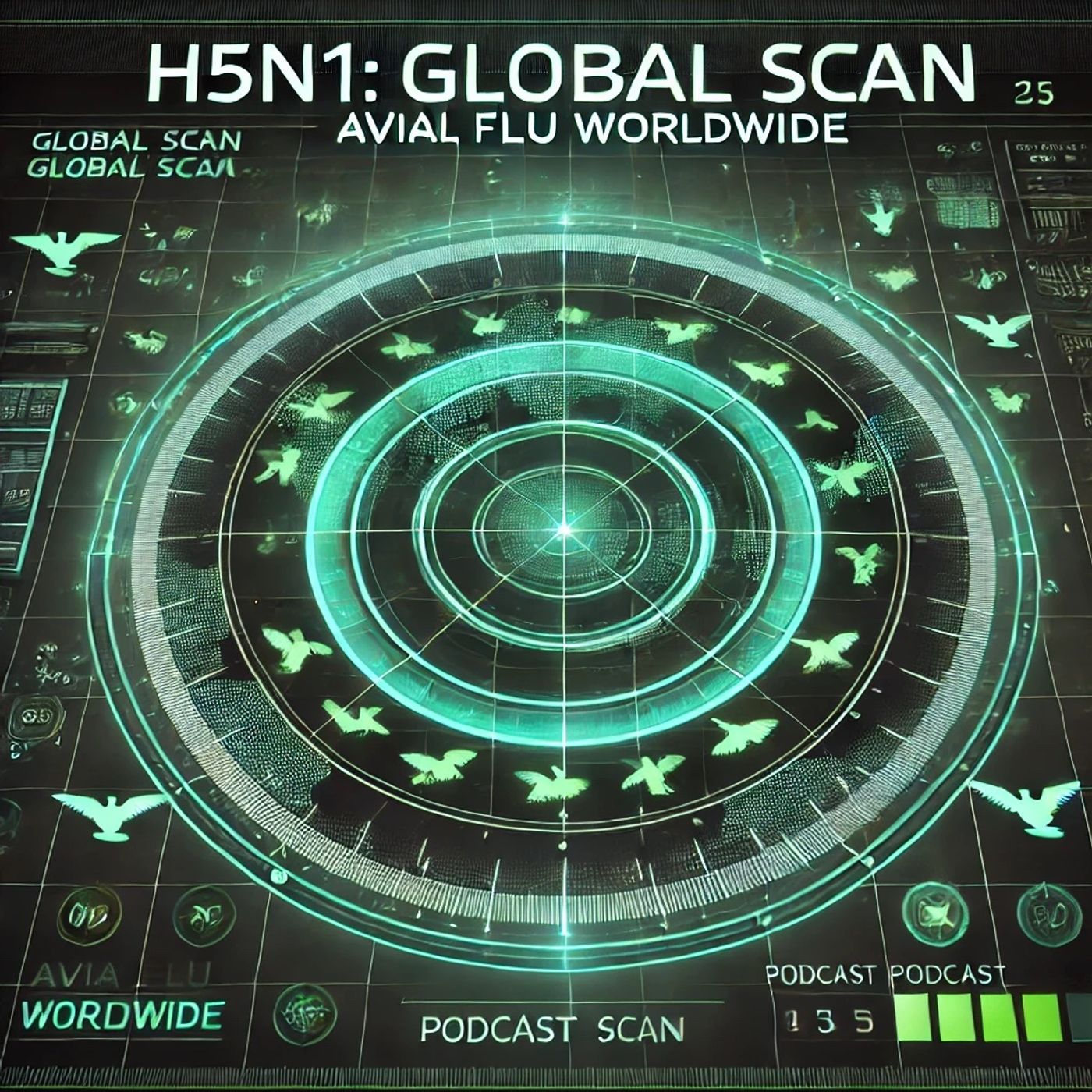Podcast Episode Details
Back to Podcast Episodes
H5N1 Avian Flu Spreads Globally: 26 Human Cases Reported in 2025, Experts Urge Preparedness and Surveillance
This is H5N1 Global Scan: Avian Flu Worldwide.
Continental snapshot:
- North America: The CDC reports 26 global human H5N1 infections through Aug 4, 2025, with three U.S. cases in 2025 and no U.S. cases since mid‑February; risk to the U.S. public remains low. The U.S. continues to manage widespread animal outbreaks, including poultry and dairy cattle, with ongoing surveillance and biosecurity enforcement, according to CDC. Pan American Health Organization notes over 100 H5 outbreaks in U.S. poultry in early 2025 and continued detections in wild birds across the region.
- Latin America and the Caribbean: PAHO/WHO documents continued poultry outbreaks in Peru and spread across the Americas since 2022, with animal cases reported from multiple countries and ongoing trade impacts from culling and movement controls.
- Europe: Public health agencies in Europe have tracked sporadic human cases and substantial poultry losses since 2020 linked to clade 2.3.4.4b, with strengthened farm biosecurity, surveillance in wild birds, and rapid culling policies, as summarized by PAHO/WHO.
- Africa: PAHO/WHO’s global context describes large wild bird and poultry die‑offs since 2020, with ongoing reporting to the World Organisation for Animal Health; several countries maintain enhanced surveillance and market controls.
- Asia: WHO reports an unusual rise in Cambodia—11 human cases reported between January and July 1, 2025, with exposures tied to backyard poultry; WHO still assesses general population risk as low, and low‑to‑moderate for exposed workers. India reported a fatal human case in April 2025, per New Zealand’s Institute of Environmental Science and Research.
- Oceania: Australia retrospectively identified a travel‑associated H5N1 case in 2024 with no onward transmission, according to ESR New Zealand.
Major research initiatives:
- Global Virus Network experts, writing in The Lancet Regional Health—Americas, call for urgent action as H5N1 adapts to mammals, citing spillover into dairy cattle and more than 70 U.S. human cases since 2024; they outline a 10‑point preparedness plan emphasizing farm biosecurity, genomic surveillance, and vaccine readiness, reported by Global Biodefense.
- CDC and WHO maintain integrated human–animal surveillance, sharing genetic data to track clades and mutations with zoonotic potential.
WHO and FAO coordination:
- WHO states that occasional human infections are expected where the virus circulates in birds and some mammals and continues to rate global public risk as low, urging rapid reporting under the International Health Regulations. FAO works with WOAH and WHO to coordinate animal outbreak reporting, farm biosecurity, and trade guidance, reflected in PAHO/WHO regional updates.
Cross‑border and trade impacts:
- PAHO/WHO notes virus spread along waterfowl flyways from Eurasia to the Americas, driving culling, movement restrictions, and market disruptions for poultry and dairy sectors. Global Biodefense reports over 168 million poultry culled in North America since 2022, straining supply chains.
Vaccine status:
- WHO and CDC indicate candidate vaccine viruses for H5N1 are available and periodically updated; public health guidance prioritizes seasonal flu vaccination for exposed workers, with H5 vaccine use reserved for contingency stockpiles and high‑risk settings. Countries are expanding manufacturing readiness aligned with GVN’s call for rapid scale‑up.
National containment approaches:
- United States: aggressive farm surveillance, worker testing, limited targeted antivirals, and culling; risk to the general public remains low, per CDC.
- United Kingdom and Europe: rapid detection, stamping‑out policies, strict farm biosecurity, and wild bird monitoring, summarized in PAHO/WHO reporting.
- Cambodia and India: intensified case finding, backyard poultry controls,
Published on 1 week, 5 days ago